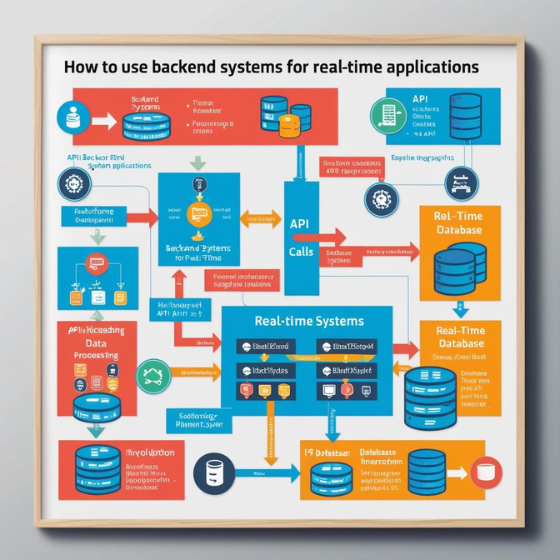Real-time applications have become an integral part of our digital lives, powering everything from live chat systems and gaming platforms to financial trading applications and collaborative tools. As the demand for real-time interactions grows, developers need technologies that can efficiently handle concurrent connections and process data swiftly. Node.js, with its non-blocking architecture and event-driven design, is particularly well-suited for building such applications. This blog explores how to leverage Node.js for real-time applications, detailing its benefits, use cases, and best practices.
Why Node.js is Ideal for Real-Time Applications
Non-Blocking I/O
Node.js’s non-blocking I/O operations allow it to handle multiple tasks simultaneously without being slowed down by any single task. This characteristic is essential for real-time applications, where users expect instant feedback and updates. By processing requests asynchronously, Node.js can efficiently manage numerous concurrent connections, ensuring that the application remains responsive even under high load.
Event-Driven Architecture
The event-driven architecture of Node.js makes it particularly effective for real-time applications. In this model, Node.js operates on an event loop that listens for and processes events in a non-blocking manner. This design enables real-time updates and interactions, as the system can react to events (such as user actions or data changes) immediately, without waiting for previous tasks to complete.
WebSocket Support
WebSocket is a protocol that provides full-duplex communication channels over a single, long-lived connection. Node.js supports WebSocket, making it an excellent choice for real-time applications that require bi-directional communication between the client and server. WebSocket enables features like live chat, real-time notifications, and collaborative editing, all of which benefit from its persistent connection and low-latency communication.
Use Cases for Real-Time Applications
Live Chat Systems
Live chat systems are a prime example of real-time applications that benefit from Node.js. These systems require immediate message delivery and updates to ensure smooth communication between users. Node.js’s ability to handle numerous simultaneous connections and process messages in real time makes it an ideal choice for building scalable and efficient chat applications.
Online Gaming
Online gaming platforms demand real-time interaction and data synchronization among players. Node.js’s high performance and low latency support are crucial for creating responsive gaming experiences. Its event-driven nature ensures that game state updates, player actions, and interactions are processed and communicated to all participants in real time.
Financial Trading Platforms
In financial trading, real-time data processing is critical for making timely decisions. Node.js’s capability to handle large volumes of data and provide real-time updates enables the development of trading platforms that offer live market data, instantaneous trade execution, and real-time portfolio tracking.
Collaborative Tools
Collaborative tools, such as document editors and project management applications, rely on real-time synchronization among users. Node.js supports the development of these tools by providing real-time updates and seamless data sharing. This ensures that changes made by one user are immediately reflected for all other collaborators, enhancing productivity and user experience.
Best Practices for Using Node.js in Real-Time Applications
Efficient Data Handling
When developing real-time applications, efficient data handling is crucial. Node.js’s asynchronous nature helps manage data flows effectively, but developers must also implement strategies to optimize performance. Techniques such as data compression, message batching, and efficient data storage can reduce latency and improve overall application performance.
Load Balancing
To ensure high availability and reliability, real-time applications must handle varying loads and prevent single points of failure. Implementing load balancing can distribute traffic across multiple servers, enhancing the application’s scalability and fault tolerance. Node.js applications can be easily scaled horizontally by deploying multiple instances behind a load balancer.
Security Measures
Real-time applications, particularly those involving sensitive data, require robust security measures. Node.js developers should implement security practices such as encrypted communication (using TLS/SSL), authentication and authorization mechanisms, and input validation to protect against common vulnerabilities like cross-site scripting (XSS) and SQL injection.
Monitoring and Debugging
Monitoring and debugging are essential for maintaining the health and performance of real-time applications. Node.js provides tools and libraries for tracking performance metrics, identifying bottlenecks, and diagnosing issues. Utilizing monitoring solutions and logging frameworks can help developers quickly address problems and ensure smooth operation.
Tools and Libraries for Real-Time Development
Socket.io
Socket.io is a popular library for building real-time applications with Node.js. It simplifies the process of implementing WebSocket communication, providing an easy-to-use API for handling real-time events and managing client-server interactions. Socket.io supports features like automatic reconnection, multiplexing, and room management, making it a powerful tool for real-time development.
Express.js
Express.js, a minimalistic web framework for Node.js, can be used in conjunction with real-time libraries like Socket.io to create robust real-time applications. Express.js handles HTTP requests and integrates seamlessly with WebSocket-based communication, allowing developers to build real-time features while maintaining a clean and organized codebase.
Redis
Redis is an in-memory data structure store that can be used for real-time data processing and caching. In real-time applications, Redis can facilitate fast data access and synchronization across multiple instances. Its pub/sub messaging system is particularly useful for implementing real-time notifications and messaging features.
Challenges and Solutions
Scalability
Scaling real-time applications can be challenging, particularly when dealing with a large number of concurrent connections. To address this, developers can use techniques such as clustering, load balancing, and distributed databases. Node.js’s modular architecture and support for horizontal scaling make it possible to build scalable real-time systems that can handle high traffic volumes.
Latency
Minimizing latency is crucial for real-time applications, as even small delays can impact user experience. Developers should optimize data processing, reduce network overhead, and employ caching strategies to minimize latency. Tools like Node.js’s built-in performance profiling can help identify and address performance issues.
Consistency
Ensuring data consistency across multiple clients in real-time applications can be complex. Implementing mechanisms such as optimistic concurrency control and conflict resolution strategies can help maintain data integrity and consistency. Leveraging distributed systems principles and consistency models can further enhance reliability.
Future Trends in Real-Time Applications with Node.js
Integration with AI and Machine Learning
The integration of artificial intelligence (AI) and machine learning (ML) with real-time applications is an emerging trend. Node.js’s ability to handle real-time data processing makes it a suitable platform for implementing AI-driven features such as real-time analytics, personalized recommendations, and predictive modeling.
IoT and Real-Time Data
The Internet of Things (IoT) is expanding the scope of real-time applications, connecting a growing number of devices and sensors. Node.js’s lightweight and event-driven nature supports the development of IoT applications that require real-time data processing and communication between devices.
5G and Enhanced Connectivity
The rollout of 5G networks promises to further enhance real-time application performance by providing faster and more reliable connectivity. Node.js applications will benefit from reduced latency and increased bandwidth, enabling even more responsive and immersive real-time experiences.
Conclusion
Node.js’s non-blocking architecture, event-driven design, and WebSocket support make it an excellent choice for developing real-time applications. By leveraging Node.js’s capabilities and following best practices, developers can build scalable, efficient, and responsive real-time systems that meet the demands of modern users. As technology continues to evolve, Node.js will remain a key player in shaping the future of real-time applications, driving innovation and enhancing user experiences across various domains.







